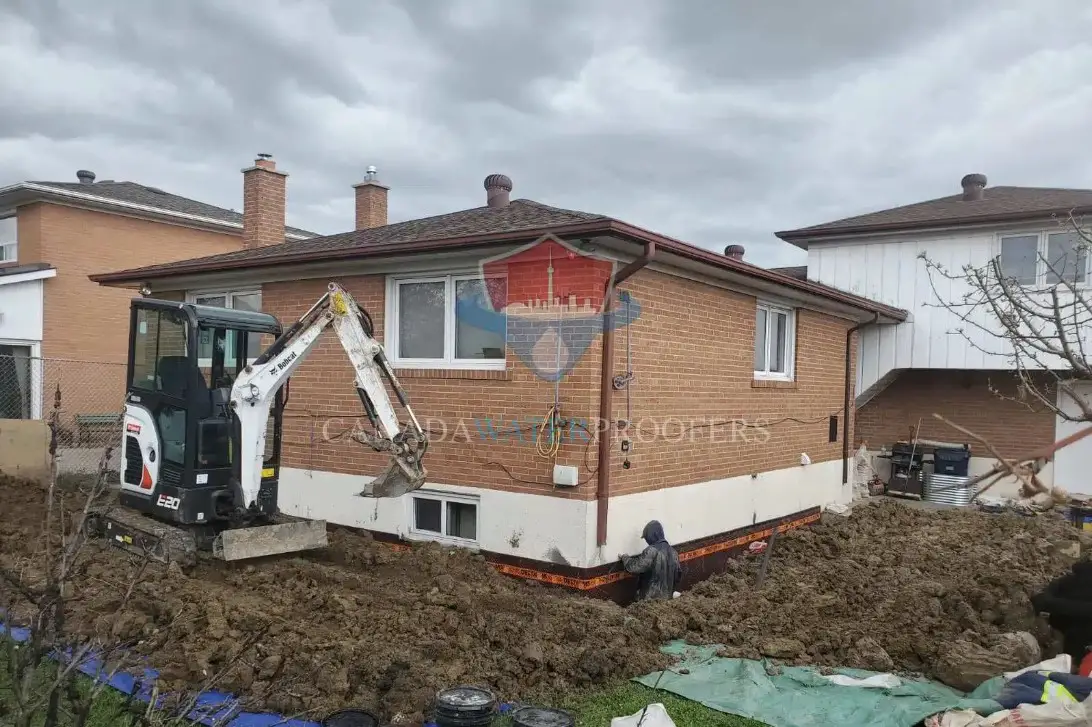Outside waterproofing is a crucial aspect of maintaining a dry and secure home. In this article, we will explore the key concepts of outside waterproofing, its importance, the process, benefits, costs, and maintenance. By the end of this article, you'll have a clear understanding of how outside waterproofing can protect your property.
Understanding the Importance of Waterproofing
Water damage is one of the most common and costly issues that homeowners face. It can lead to structural damage, mold growth, and health problems. Outside waterproofing acts as a barrier against water infiltration, ensuring that your basement and foundation remain dry.
The Difference Between Interior and Exterior Waterproofing
Interior waterproofing addresses water issues from inside your home, often after the damage has occurred. In contrast, outside waterproofing prevents water from entering your home in the first place. It's a proactive approach to protect your property.
Signs You Need Outside Waterproofing
Several signs indicate that you may need outside waterproofing, including dampness in the basement, visible cracks in the foundation, and water seepage during heavy rains. Identifying these issues early can save you from more extensive and expensive repairs.
Preparing for Outside Waterproofing
Before you begin outside waterproofing, some essential preparations are required.
Assessing Your Property
A thorough assessment of your property is the first step. Identify areas where water accumulates or leaks into your basement. This evaluation helps determine the extent of waterproofing required.
Choosing the Right Waterproofing Materials
Selecting the appropriate waterproofing materials is crucial. Common choices include asphalt coatings, rubberized membranes, and drainage systems. The selection depends on your specific needs and budget.
Hiring a Professional vs. DIY
Deciding whether to hire a professional or undertake DIY waterproofing is an important choice. While DIY may seem cost-effective, professionals have the expertise and equipment to ensure a more reliable and lasting result.
The Outside Waterproofing Process
The outside waterproofing process involves several steps to safeguard your property effectively.
Excavation and Site Preparation
To access the foundation walls, excavation is necessary. This process involves digging around your home, which can impact landscaping. Proper site preparation ensures minimal disruption and damage.
Applying Waterproofing Membranes
Waterproofing membranes are applied to the exterior of the foundation walls. These act as a barrier, preventing water from penetrating the walls and causing damage.
Drainage Solutions
Installing proper drainage solutions is critical. These systems direct water away from your home's foundation, preventing pooling and seepage.
Backfilling and Re-Landscaping
Once the waterproofing is complete, the excavated area is backfilled and re-landscaped, restoring the aesthetic of your property.
Benefits of Outside Waterproofing
Outside waterproofing offers several significant benefits.
Protection Against Water Damage
The primary benefit is protecting your home from water damage. With a reliable outside waterproofing system, you reduce the risk of costly repairs due to water infiltration.
Improved Indoor Air Quality
Outside waterproofing can also improve indoor air quality. It prevents moisture and mold growth, creating a healthier living environment.
Increased Property Value
Investing in outside waterproofing can increase the value of your property. Prospective buyers are often willing to pay more for a home with a dry, secure basement.
Costs and Maintenance
Understanding the costs and maintenance of outside waterproofing is essential.
Estimated Costs of Outside Waterproofing
The costs of outside waterproofing can vary widely, depending on the size of your property, the materials used, and the extent of the work. On average, it ranges from $5,000 to $15,000.
Maintenance Tips for Long-Term Results
Regular maintenance is key to the longevity of your waterproofing system. Inspect and clean the drainage systems, ensure proper grading, and address any issues promptly.
In conclusion, outside waterproofing is a vital investment to protect your home from water damage and maintain its value. By following the right steps and investing in professional services, you can ensure a dry and secure living space.
FAQs
1. How can I tell if my home needs outside waterproofing?
If you notice dampness in your basement, cracks in your foundation, or water seepage during heavy rains, it's time to consider outside waterproofing.
2. Is outside waterproofing more effective than interior waterproofing?
Yes, outside waterproofing is more effective as it prevents water from entering your home in the first place.
3. What are the maintenance requirements for outside waterproofing?
Regular maintenance includes inspecting and cleaning drainage systems, ensuring proper grading, and addressing issues promptly.
4. How much does outside waterproofing cost?
The cost can vary but typically ranges from $5,000 to $15,000, depending on various factors.
5. Can I perform outside waterproofing as a DIY project?
While DIY is an option, hiring a professional ensures a more reliable and lasting result.





